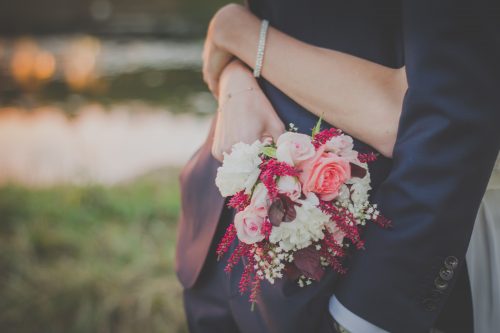 This act came into effect on January the 1st 1950 and is the one we know today, with a few amendments. Its biggest change was to abolish marriage entirely for those under 16 years of age in England and Wales.
This act came into effect on January the 1st 1950 and is the one we know today, with a few amendments. Its biggest change was to abolish marriage entirely for those under 16 years of age in England and Wales.
We see a widening of the permissible hours of marriage, from between 9am and 3pm to 8am and 6pm. A few people then using this early start so they can get married before work, as the playwright Alan Bennett dryly notes about his parents in his excellent book A Life Like Other People’s
It is the first act to specifically mention Jews and Quakers and when those marriages may be solemnized. Prior acts concerned themselves almost entirely with laws for Church of England marriages, every other religion seemingly being grouped together under general rules and it runs to many pages in length, compared to the diminutive 2 pages of the 1836 act. It covers many unattended intricacies such as marriage on ships and across borders, as well as much refinement of the prior act. Let’s get more in-depth into this act below!
The Marriage Act of 1949 is an act of the Parliament of the United Kingdom, the act allows for marriages within England and Wales to be regulated. The act had originally prohibited solemnizing marriages during the evenings as well as overnight more specifically between the hours of 6pm – 8am. However, this was repealed on October 1st 2012 due to the increase in civil wedding ceremonies steadily increasing in popularity. This decision only further increased the figures of civil wedding ceremonies and allowed for venues to be taken place at any time of the day as long as a 15-day notice was served before the venue.
The Marriage Act of 1949 was also the first act to be enacted under the Consolidations of Enactment Procedure Act 1949. This act allowed for “minor corrections and improvements” to other acts as well as allowing for the modification of the Marriage Act 1949.
The Marriage Act of 1949 first came into effect on the 1st Of January 1950 which is the same marriage act that we abide by today with a few altercations and corrections since the original act was enforced. The biggest changes that the 1949 Act enforced was to abolish marriage for minors completely as well as abolishing the night time ban on marriages across the nation. Abolishing marriages for minors meant that anyone under the age of 16 would no longer be able to wed to anyone no matter if consent was granted or not it was automatically ruled void due to the new marriage act. This altered the previous act which stated that anyone could be wed including minors as long as consent was provided for the marriage.
With the extension of permissible wedding hours going from 9am to 3pm to 8am to 6pm with the new 1949 act being enforced. This introduced a viable opportunity for couples to get off to an early start for their wedding and even allowed for marriage to take place before the working day had even begun. This is mentioned in a book called A Life Like Other People’s where Alan Bennett dryly references about his parents.
The 1949 Act is the first Act to specifically mention Jews and Quakers also known as the 1753 Quaker Marriage Law and to dictate when and how those marriages may be solemnized within the country. The prior acts focused themselves almost entirely in compliance with laws for Church of England marriages, with every other religion seemingly being grouped together under the general rules in order to wed them. The 1949 Act runs way too many pages in length compared to the diminutive 2 pages of the 1836 act. This new 1949 Act covers many unattended intricacies such as marriage on ships and across borders, this also includes the refinement and corrections of the prior act.
A Quaker Marriage is not an alternative form of Marriage available to the general public, but is specifically for members and those who, whilst not in a formal relationship, are in unity with its religious nature and witness. Usually, however, one or both of the parties being married will be members or they will be otherwise associated with the Society. Additionally, the Marriage Act 1949 relating to England and Wales places certain limitations on who may be married according to Friends’ usage. Before the wedding the couple must complete a declaration of intention of marriage. They must also fulfil all the legal requirements for a marriage including obtaining the appropriate certificates from the registrars of the districts in which they live.
